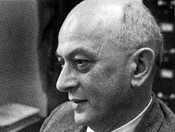The Power Lies With The Group
 In the 1950’s a psychology professor conducted a study too see if the power of Group Dynamics would affect the decision of an individual. The study yielded interesting results to say the least.
In the 1950’s a psychology professor conducted a study too see if the power of Group Dynamics would affect the decision of an individual. The study yielded interesting results to say the least.
Professor Solomon Asch, originally from Warsaw, performed the study in Pennsylvania. The Swarthmore College is located 11 miles southwest of Philadelphia.
The psychological experiment used 123 male subjects. The individual participants were not told about the whole concept of the study; the participants assumed that it was a random study without rehearsals. Behind the scene actors were chosen to help aid with the experiment. The actors were told precisely what to say and how to respond to the questions that were asked.
The participant was given card number one, which had a vertical line on it. Then the participant was given card number two, which had three lines that were of different lengths. Then the participant was asked which line or mark on the second card matched with the line on the first card. The answers were labeled as one, two, or three, or as a, b, or c.
But here’s the catch. Before the participant could answer, he had to listen to the responses of 5 or 7 actors, and sometimes as many as 15 actors. The actors were told in advance whether to answer correctly or incorrectly to the questions. Some rounds or trials the answers from the actors were correct, but many times their responses were deliberately supplanted with the wrong answers. This was purely intentional, but the participant was completely unaware of the deception.
Each participant had no way of knowing the outcome. Professor Asch just wanted to see how the group of actors, or more specifically, how they answered the questions, would influence the behavior of the participants. Asch thought that most of the participants would not give an incorrect answer just because the actors did. However, the results would prove Asch wrong, at least for the most part.
Results proved that the majority of participants conformed on 37% of the so called trials. About 25%, or roughly one-fourth of participants, did not conform on any trial. Three-fourths, or 75% of participants, conformed at least once. Five percent of participants conformed every time.
The Asch conformity experiments demonstrated the real power of Group Dynamics. The results overwhelmingly showed that the individual was heavily influenced by the group of actors. It did take a total of three or more actors to heavily influence the participant. One or two actors was not a major impact of the participant’s decision or thought process.
The Bandwagon Effect supports this phenomenon. It suggests that people will say things, do things, and believe things simply because many other people will do the same. If the crowd tends to believe something, the individual will jump on the bandwagon, even without seeing if there is any evidence to support the belief.
If it walks like a duck, looks like a duck, and quacks like a duck, it probably is a duck. However, if the majority of the people point at a deer and call it a horse, then it surely must be a horse. You will confirm this, right?
Subscribe Now!
Featured Deal ➸
Social Button ➸
Categories
- 1
- 111
- 5
- 7Slots
- 9
- a16z generative ai
- Amateur Radio
- antikaeltehilfe.de
- atlantikcorner.com
- bauhutte-g.com
- blog
- Bookkeeping
- Casino
- Cryptocurrency exchange
- extension-autoroutes-non.ch
- Forex Trading
- Future Tech
- Geeky Tips
- Going Green
- Going Mobile
- News
- Pin-Up AZ
- Pin-Up indir
- Pin-Up oyunu
- Pin-UP VCH
- Post
- Product Reviews
- ready_text
- restaurantelacontrasena.com
- Scanner Listening
- Science Sightings
- Sober living
- Technology
- texts
- thomas-petandfamily.de
- Uncategorized
- Новости Криптовалют
- Новости Форекс
Archives
SQUIDBOARD
Academic Tech
Multimedia MegloMania
Tech Toolbox
- Acronis
- AN/GRC-9
- Apple Final Cut Pro
- Audacity
- Audacity VST Plug-ins
- BleachBit
- ClimateViewer 3D
- Cool Edit Pro 3.1
- CyberGhost
- Flickr
- FreeSCAN
- fring
- Fruper
- FTA Lists
- GPS Calculator
- GPS Converter
- HAMSOFT
- HF Antennas
- inSSIDer
- Levelator
- MaxMind
- Microphone Cables
- Morse Code Chart
- Old Version
- Pendriveapps.com
- PortableApps.com
- Privacy Badger
- PulseAudio
- Rowetel
- ShopJimmy
- Teleprompter Software
- TV Listings
- UNetbootin
- Voicemeeter Banana
- Winlink
RSS feed for comments on this post · TrackBack URI
Leave a reply